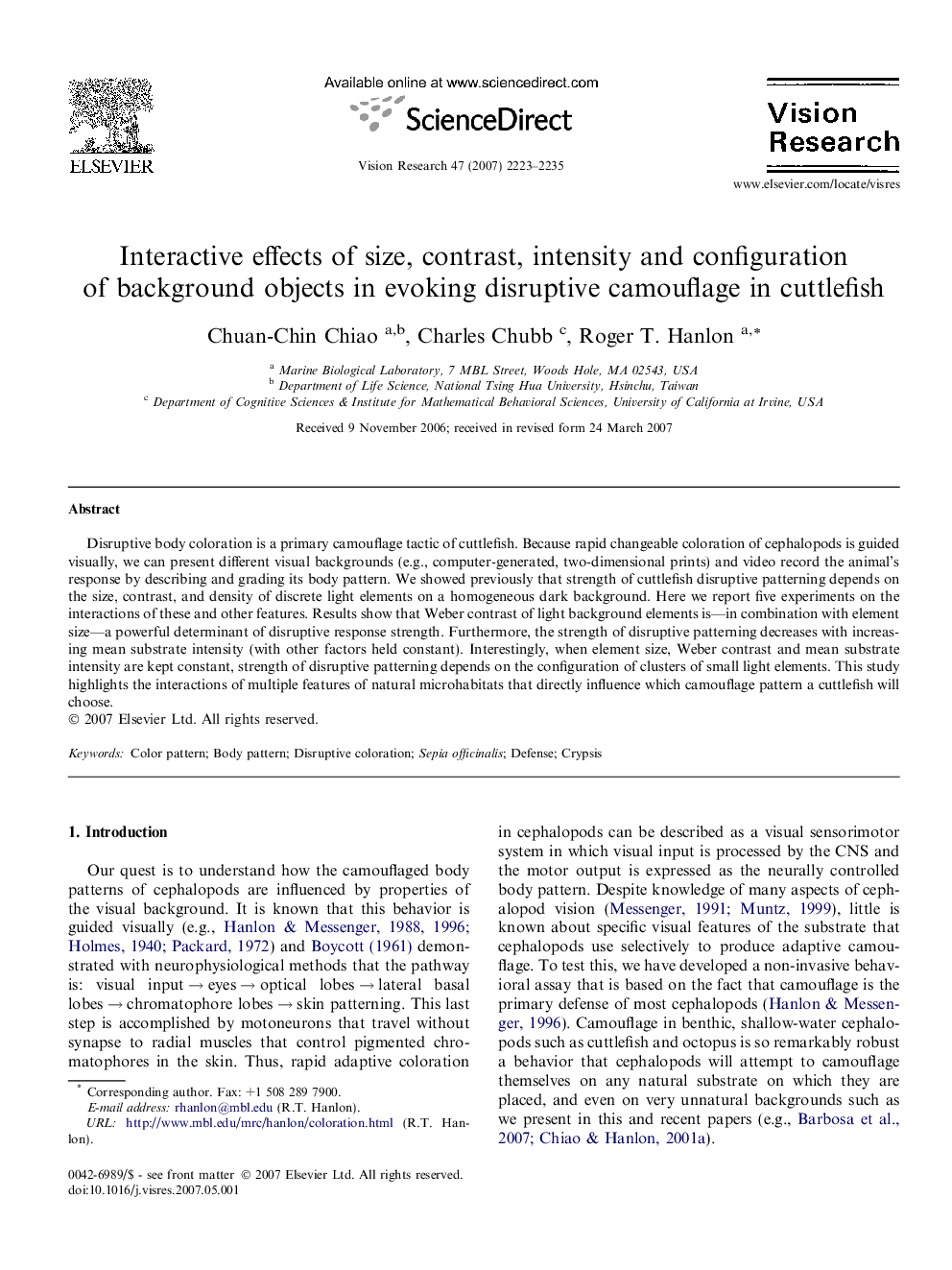| Article ID | Journal | Published Year | Pages | File Type |
|---|---|---|---|---|
| 4035546 | Vision Research | 2007 | 13 Pages |
Disruptive body coloration is a primary camouflage tactic of cuttlefish. Because rapid changeable coloration of cephalopods is guided visually, we can present different visual backgrounds (e.g., computer-generated, two-dimensional prints) and video record the animal’s response by describing and grading its body pattern. We showed previously that strength of cuttlefish disruptive patterning depends on the size, contrast, and density of discrete light elements on a homogeneous dark background. Here we report five experiments on the interactions of these and other features. Results show that Weber contrast of light background elements is—in combination with element size—a powerful determinant of disruptive response strength. Furthermore, the strength of disruptive patterning decreases with increasing mean substrate intensity (with other factors held constant). Interestingly, when element size, Weber contrast and mean substrate intensity are kept constant, strength of disruptive patterning depends on the configuration of clusters of small light elements. This study highlights the interactions of multiple features of natural microhabitats that directly influence which camouflage pattern a cuttlefish will choose.
